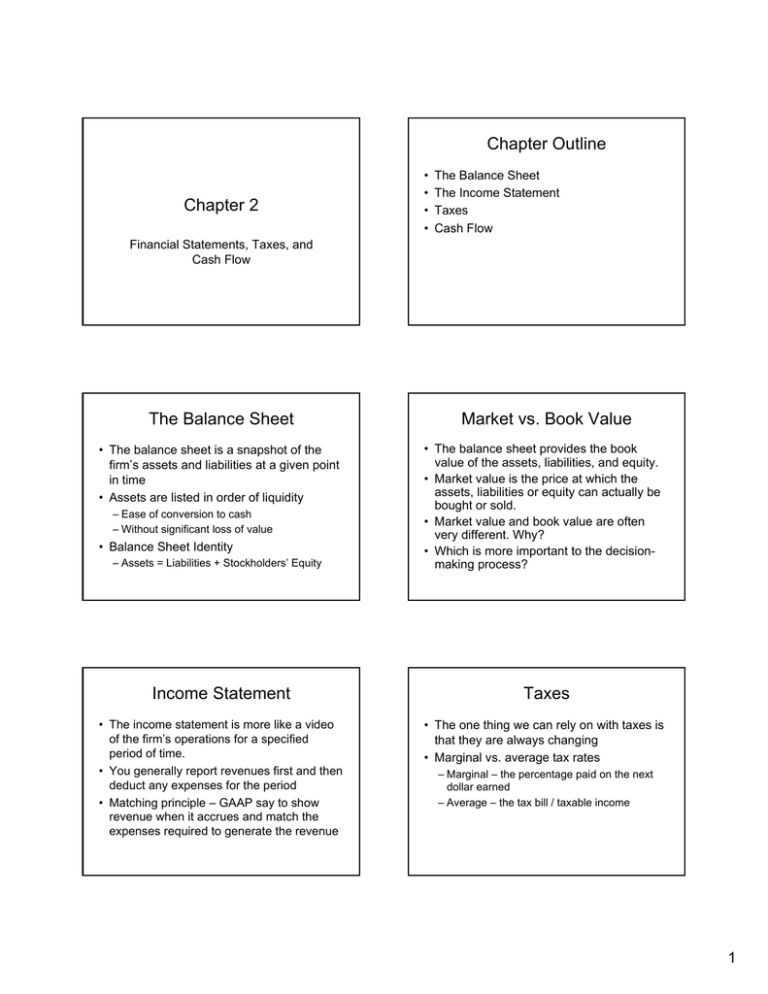Chapter Outline Chapter 2 The Balance Sheet Market vs. Book Value
advertisement

Chapter Outline Chapter 2 • • • • The Balance Sheet The Income Statement Taxes Cash Flow Financial Statements, Taxes, and Cash Flow The Balance Sheet • The balance sheet is a snapshot of the firm’s assets and liabilities at a given point in time • Assets are listed in order of liquidity – Ease of conversion to cash – Without significant loss of value • Balance Sheet Identity – Assets = Liabilities + Stockholders’ Equity Market vs. Book Value • The balance sheet provides the book value of the assets, liabilities, and equity. • Market value is the price at which the assets, liabilities or equity can actually be bought or sold. • Market value and book value are often very different. Why? • Which is more important to the decisionmaking process? Income Statement Taxes • The income statement is more like a video of the firm’s operations for a specified period of time. • You generally report revenues first and then deduct any expenses for the period • Matching principle – GAAP say to show revenue when it accrues and match the expenses required to generate the revenue • The one thing we can rely on with taxes is that they are always changing • Marginal vs. average tax rates – Marginal – the percentage paid on the next dollar earned – Average – the tax bill / taxable income 1 The Concept of Cash Flow Cash Flow From Assets • Cash flow is one of the most important pieces of information that a financial manager can derive from financial statements • The statement of cash flows does not provide us with the same information that we are looking at here • We will look at how cash is generated from utilizing assets and how it is paid to those that finance the purchase of the assets • Cash Flow From Assets (CFFA) = Cash Flow to Creditors + Cash Flow to Stockholders • Cash Flow From Assets = Operating Cash Flow – Net Capital Spending – Changes in NWC 2











